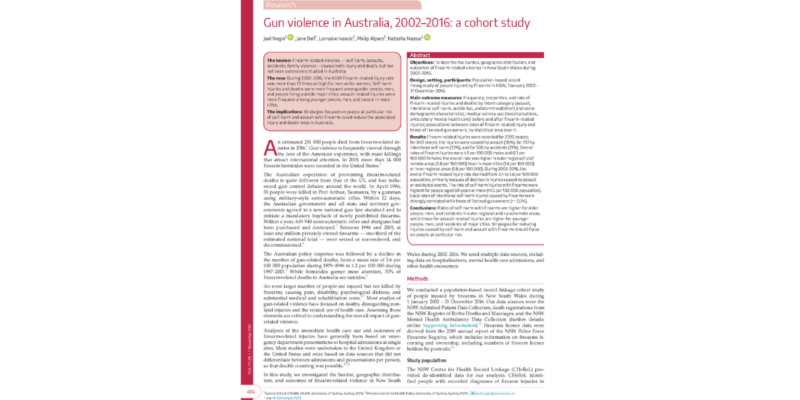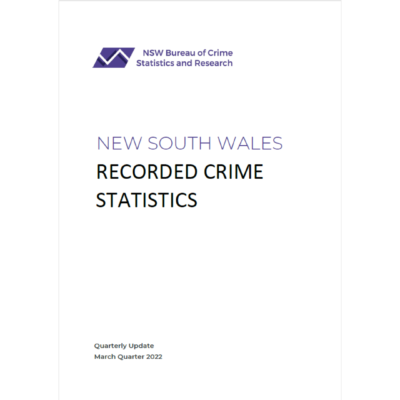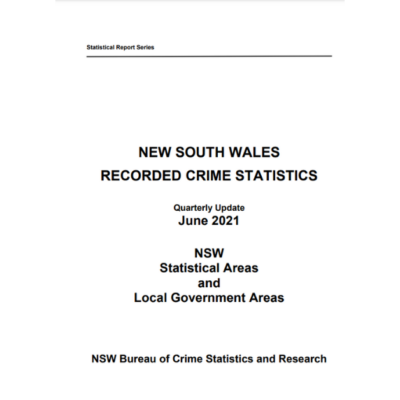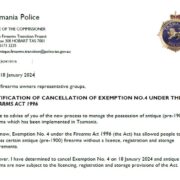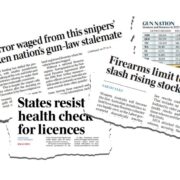Gun Violence in Australia, 2002 – 2016: a cohort study
AUTHOR: Joel Negin, Jane Bell, Lorraine Ivancic, Philip Alpers, Natasha Nassar
DATE: 1 November 2021
Abstract
Objectives: To describe the burden, geographic distribution, and outcomes of firearm‐related violence in New South Wales during 2002–2016.
Design, setting, participants: Population‐based record linkage study of people injured by firearms in NSW, 1 January 2002 – 31 December 2016.
Main outcome measures: Frequency, proportion, and rate of firearm‐related injuries and deaths by intent category (assault, intentional self‐harm, accidental, undetermined/other) and socio‐demographic characteristics; medical service use (hospitalisations, ambulatory mental health care) before and after firearm‐related injuries; associations between rates of firearm‐related injury and those of licensed gun owners, by statistical area level 4.
Results: Firearm‐related injuries were recorded for 2390 people; for 849 people, the injuries were caused by assault (36%), for 797 by intentional self‐harm (33%), and for 506 by accidents (21%). Overall rates of firearm injuries were 4.1 per 100 000 males and 0.3 per 100 000 females; the overall rate was higher in outer regional/rural/remote areas (3.8 per 100 000) than in major cities (1.6 per 100 000) or inner regional areas (1.8 per 100 000). During 2002–2016, the overall firearm‐related injury rate declined from 3.4 to 1.8 per 100 000 population, primarily because of declines in injuries caused by assault or accidental events. The rate of self‐harm injuries with firearms were highest for people aged 60 years or more (41.5 per 100 000 population). Local rates of intentional self‐harm injuries caused by firearms were strongly correlated with those of licensed gun owners (r = 0.94).
Conclusions: Rates of self‐harm with firearms are higher for older people, men, and residents in outer regional and rural/remote areas, while those for assault‐related injuries are higher for younger people, men, and residents of major cities. Strategies for reducing injuries caused by self‐harm and assault with firearms should focus on people at particular risk.
Read SIFA’s analysis of the biases contained in this study here.


